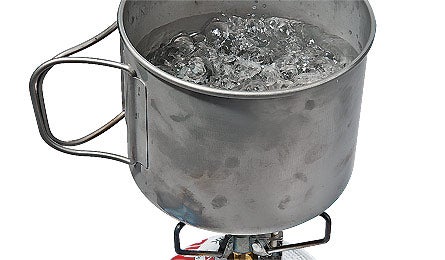Troubleshoot This: Burned by Boiling Water

'Boiling Water (Bydlon)'
Cool it
Spilled cooking water causes most camping burns. “Remove soaked clothing and make sure no one else can get splashed,” advises Anna Gast, a Wilderness Medicine Institute instructor. “Then use snow or water to chill it until it feels cool to the victim. If you act fast, you can prevent deeper tissue damage.”
Assess
Blistering burns are painful, susceptible to infection, and can be life-threatening. Evacuate to a hospital if you have a blistered or charred burn on your face, neck, hands, feet, underarm, groin, around an appendage, or covering more than 10 percent of your body’s surface area (an entire arm, half a leg).
Dress the wound
Remove anything that could restrict circulation if the area swells. Leave blisters intact, apply antibiotic ointment, and cover the burn with gauze. “Open blisters will weep fluid; get out of the backcountry if you can’t keep the burn clean,” says Gast.
Stabilize Your Stove
- Cook on flat ground; avoid setting a stove on a platform.
- Brace oversized pots with a rock wall around the burner.
- Keep hot pots low; lift no higher than your shins.
Line of Fire For more camp kitchen safety tips, click here.